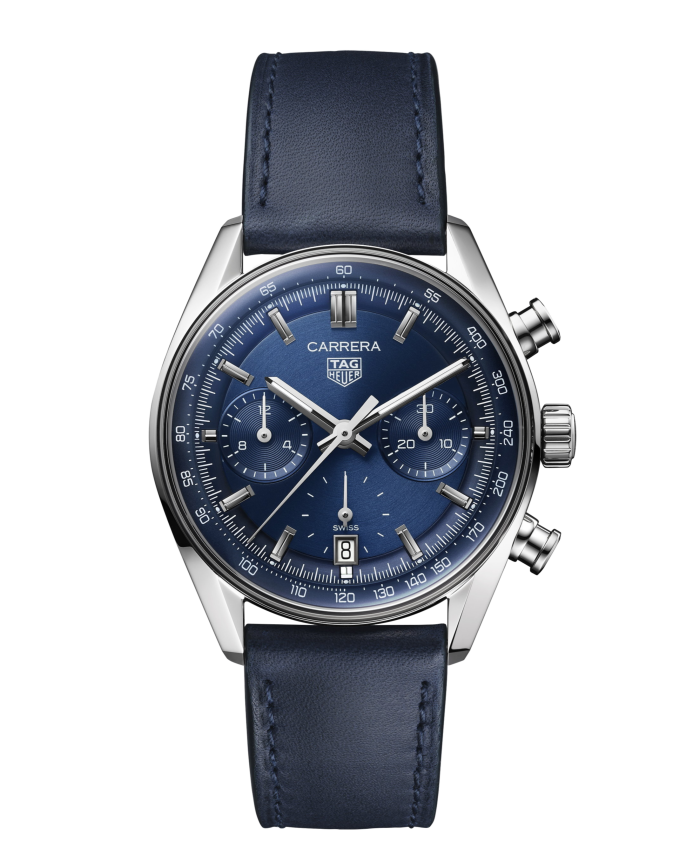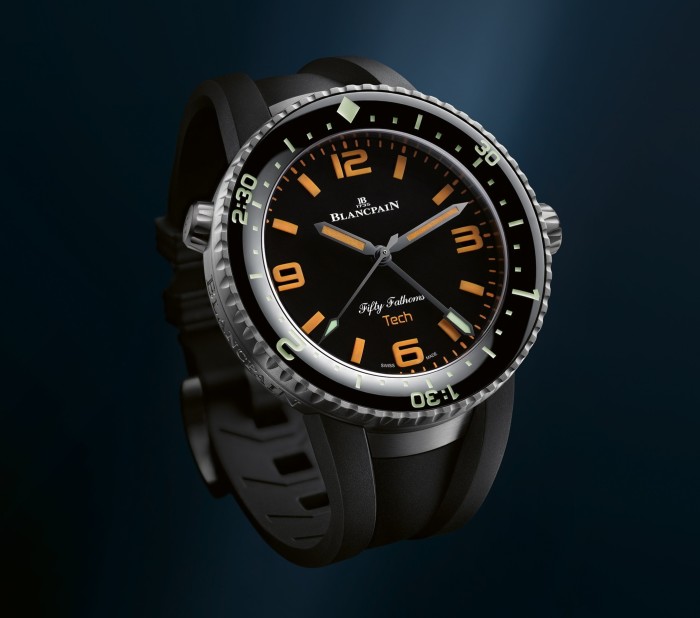Watches and Wonders: Brands mark significant birthdays of sports models

Roula Khalaf, Editor of the FT, selects her favourite stories in this weekly newsletter.
This is a year filled with significant sports watch anniversaries. Three of the most popular Rolex models have milestones coming up, with the Daytona turning 60, and the Submariner and the Explorer pushing 70.
Two other brands whose signature models have also played a part in the evolution of the sports watch have special birthdays to celebrate, too: Tag Heuer’s Carrera chronograph and Blancpain’s benchmark 50 Fathoms diver model.
But, while Rolex is generally low-key about marking such anniversaries, the same cannot be said for the other dial names. Tag Heuer has invested in a five-minute movie short starring Ryan Gosling to go alongside the release of a clutch of new models being announced at the Watches and Wonders fair today — and at least two other Carreras will be launched later in the year.
Directed by American film-maker David Leitch, the movie was shot in Australia in a break from Gosling and Leitch’s forthcoming film The Fall Guy. The short — called The Chase for Carrera — will premiere in London on April 20.
“I think it’s a first in the watch industry in terms of length and quality and the fact that it features an A-list Hollywood actor,” says chief executive Frédéric Arnault. “Each watch in the Tag Heuer family has its own role to play, but this year the Carrera is absolutely number one for us — it’s undoubtedly one of our most important watches historically, which is why we’re investing a great deal in its future.”

The Carrera watch line accounts for more than 30 per cent of Tag Heuer’s business.
Although the Carrera chronograph was launched in December 1963, more than 30 years before Arnault was born, he believes the story of how former Heuer president Jack Heuer was inspired to create it after learning about the infamous Carrera Panamericana cross-Mexico road race of the 1950s still resonates with today’s young buyers.
“I think younger people are getting really interested in the stories, image and styles that are part of the classic car world and, with the new Carrera, we’ve tried to capture the essence of the historic models in new but easily recognisable designs,” says Arnault.

The star piece (and the watch being promoted by Gosling in the film) is the 39mm “Glass Box” chronograph, which features a prominent crystal and a curved dial — a modern method of achieving the high level of legibility and functionality that Heuer was aiming for when he created the original, $98 “Carrera 12” of 1963.
That watch was largely replicated in an edition of 600 “panda dial” Carreras launched in January as the official anniversary model. However, during the Watches and Wonders event, Tag will pull the wraps off a 43mm glass box chronograph tourbillon, two further chronographs with conventional crystals, as well as a new version of the three-hand Carrera Date.
Although the original Carrera Panamericana race was cancelled after its 1954 iteration due to a spate of fatal accidents, it was revived as a stage rally in 1988 and still takes place today.
This year’s rally, happening in October, will see Tag Heuer as the official watch and timing partner and is likely to coincide with the release of another new Carrera model in collaboration with Porsche, which has also used the name on certain versions of its cars since 1954.
Meanwhile, away from the Watches and Wonders show in Geneva, Blancpain has chosen to celebrate the 70th anniversary of its landmark 50 Fathoms with a trio of new models being launched in different parts of the world.
Regarded by many as the very first commercially produced sport diver’s watch, the 50 Fathoms saw the light of day in 1953 after the French navy’s elite underwater unit was established by naval officers Robert Maloubier and Claude Riffaud.
They called on Blancpain having heard that its manager, recreational diver Jean-Jacques Fiechter, already had a design in the pipeline as a result of coming close to running out of air after mistiming an ascent.
Upgraded with the addition of a Faraday cage, to protect against magnetism, the 50 Fathoms went into service in 1953, remaining a military secret until 1956, when it appeared in Jacques Cousteau’s underwater documentary The Silent World.
It subsequently came to be included in commercial Scuba-diving catalogues and was even made available to rent from specialist shops as the popularity of sports diving took off.

The model disappeared from Blancpain’s line-up during the 1970s, only to reappear in 2003 after the brand had been under Swatch Group ownership for more than a decade.
It was then that chief executive Marc Hayek — another diving fan — sanctioned a 50th anniversary revival, of three limited editions of 50 pieces each, across the territories of Asia, Europe and North America.
The editions proved so popular that the 50 Fathoms returned to full production — and the three-launch theme has been revisited to celebrate this year’s 70th anniversary. The 50 Fathoms line now accounts for 35 per cent of Blancpain’s sales.
In January, three 70-piece “Act One” editions were released, all closely based on the 2003 model and respectively dedicated to the Emea, Asia-Pacific and Americas regions.
This was followed by “Act Two” which involved the release of the most technically advanced 50 Fathoms yet, in the form of the Tech Gombessa model. It was launched on the Rangiroa atoll in French Polynesia.
Five years in development, the watch was tested by Hayek and professional diver Laurent Ballesta, founder of the Blancpain-backed Gombessa project, which undertakes extreme underwater expeditions around the world.
Uniquely, the Tech Gombessa can measure immersion times of up to three hours thanks to a special bezel linked to a dedicated hand that completes one dial rotation in 180 minutes.
Hayek and Ballesta have filed a joint patent for the hand-wound movement’s three-hour countdown mechanism, which sits in a 47mm titanium case fitted with a helium release valve to make the £24,700 watch suitable for saturation diving.
The “Act Three” 50 Fathoms will be announced in September — and, taking a leaf out of Rolex’s book, Blancpain refuses to give the slightest hint of what it might be like.
Comments